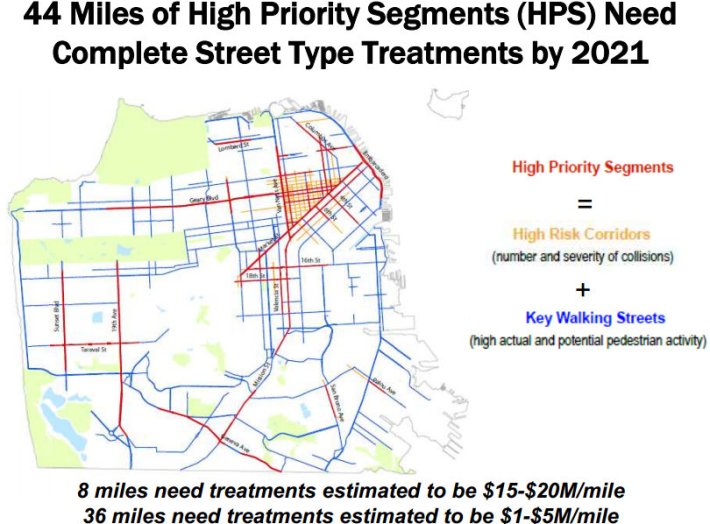This morning the SF Municipal Transportation Agency is presenting its strategic plans to reduce pedestrian injuries and increase bike ridership over the next five years at a staff workshop with the agency's board of directors.
It's an important moment for livable streets in San Francisco, and we'll be bringing you detailed coverage after the workshop. In the meantime, here's a look at the targets the agency is setting for its walking and biking programs.
The Draft Pedestrian Strategy [PDF] sets out to cut pedestrian injuries in half and increase walking from roughly 19 percent of all trips to 23 percent by 2021. A major strategy is to re-engineer at least five miles of "high priority segments" per year, including 10 bulb-outs per year. To pay for it, the agency will need to secure about $6 to $8 million in additional annual funding for pedestrian safety.
The Draft Bicycle Strategy [PDF] lays out three scenarios that vary based on the amount invested in bicycling. The "Strategic Plan" scenario -- the medium choice -- is projected to raise bicycling's share of all trips to 8 to 10 percent by 2018. The more ambitious "System Build-Out" is projected to raise bicycling mode share to 20 percent. In one sense, the funding gap is substantial. Under the status quo, the agency would have $30 million to invest in bicycling between now until 2018, while the "Strategic Plan" scenario calls for $190 million over the same period. Within the context of the agency's overall budget, however, the ramped-up investment in bicycling is not asking for all that much. The SF Bicycle Coalition pointed out that even under the "System Build-Out" scenario (total cost: $500 million for infrastructure), bicycling would still account for less than 8 percent of the SFMTA's capital spending.
Stay tuned more details on each plan.






